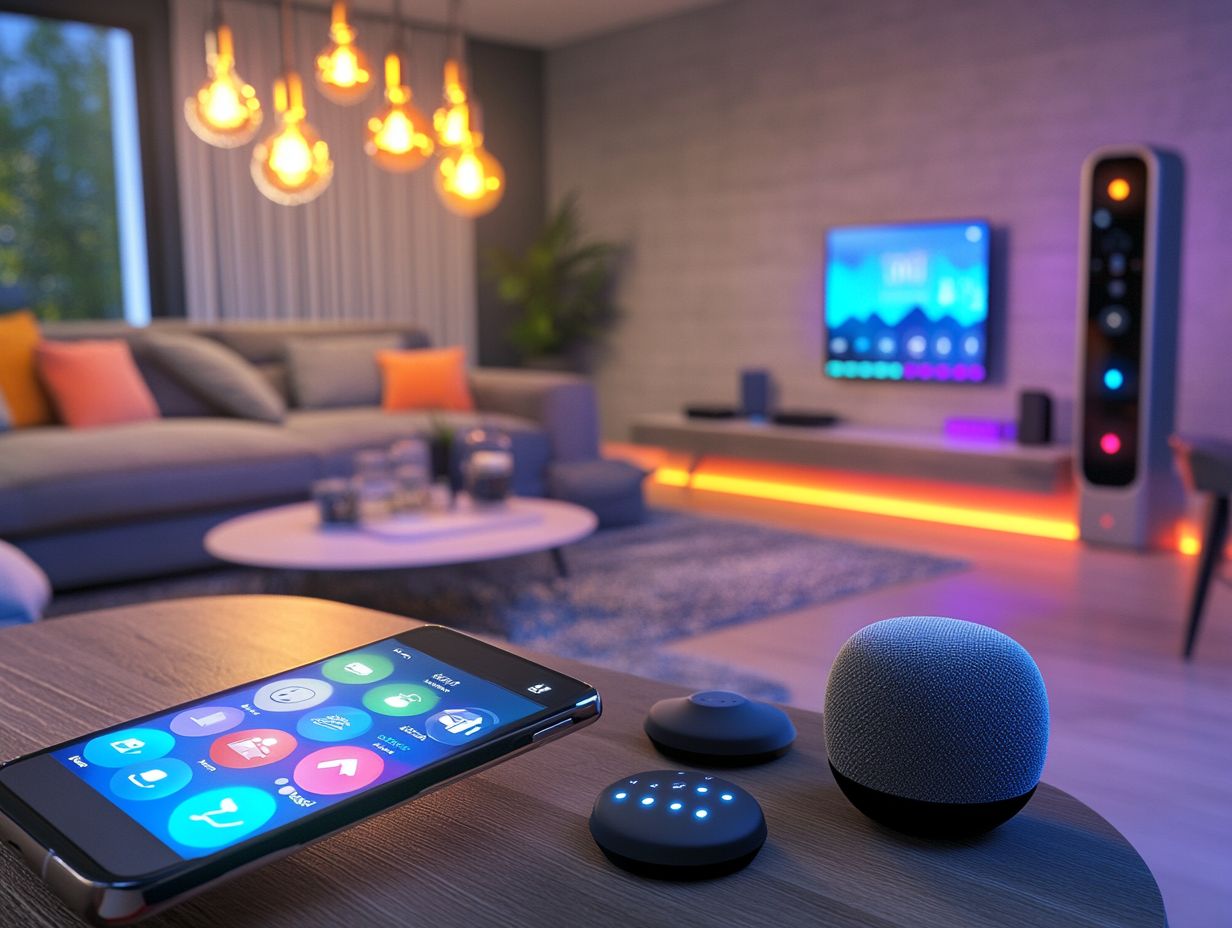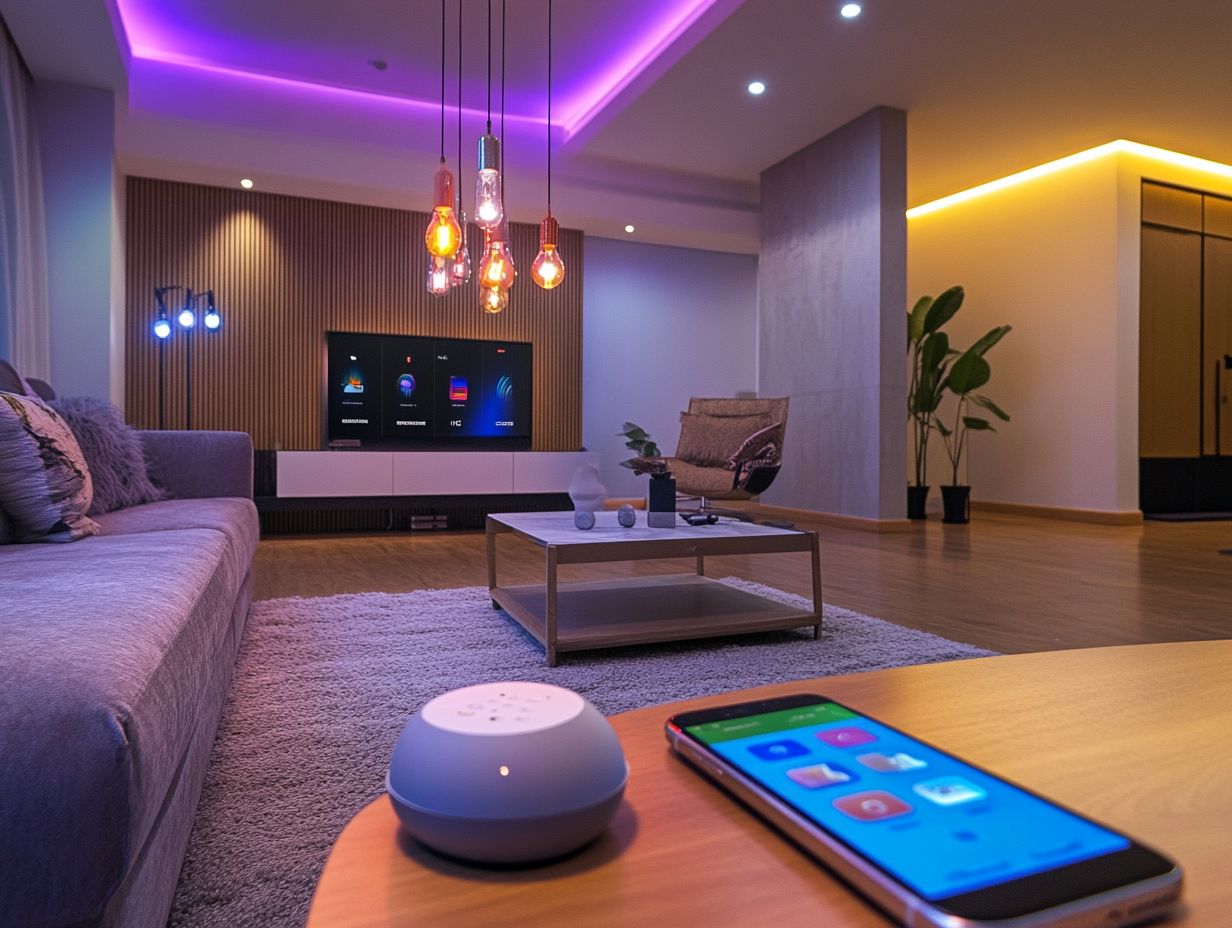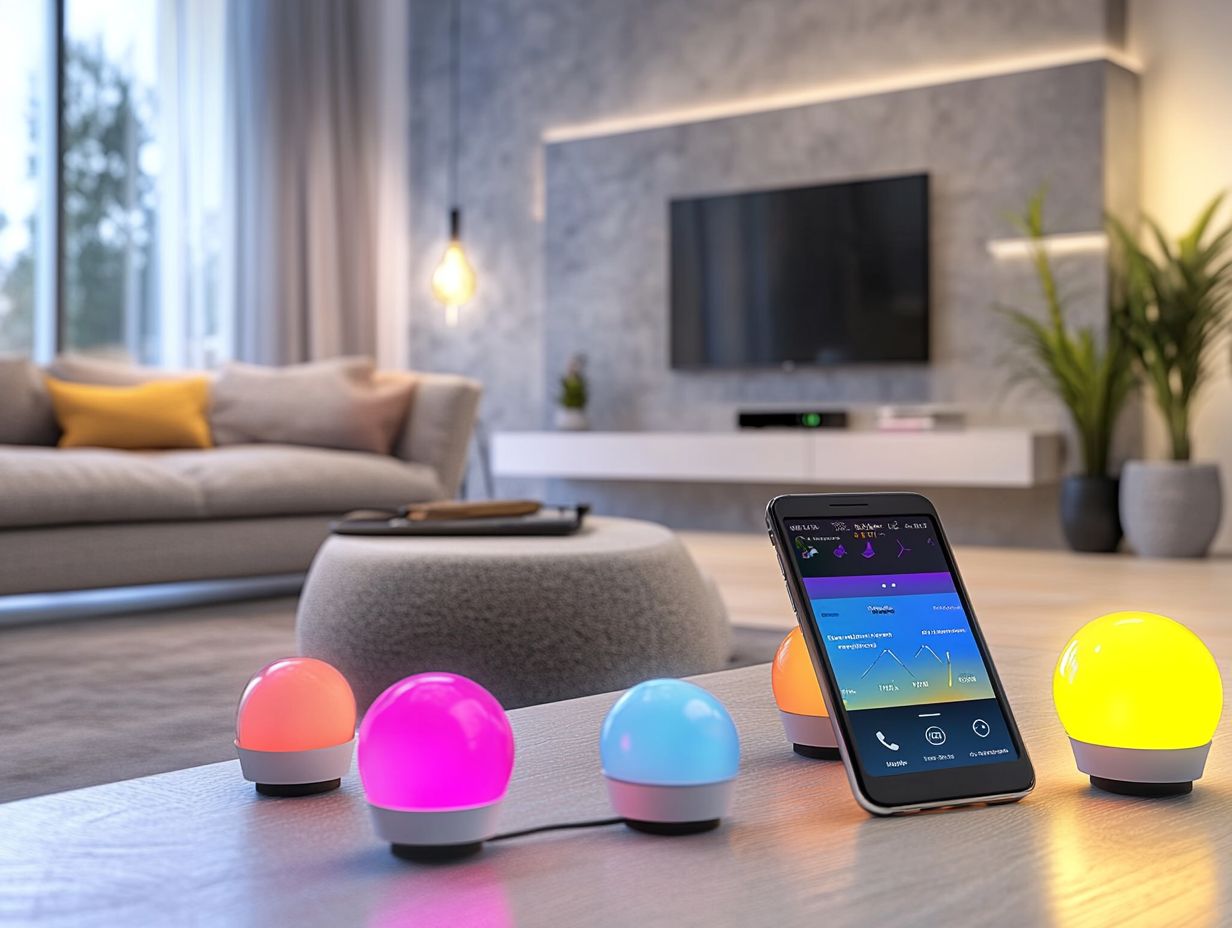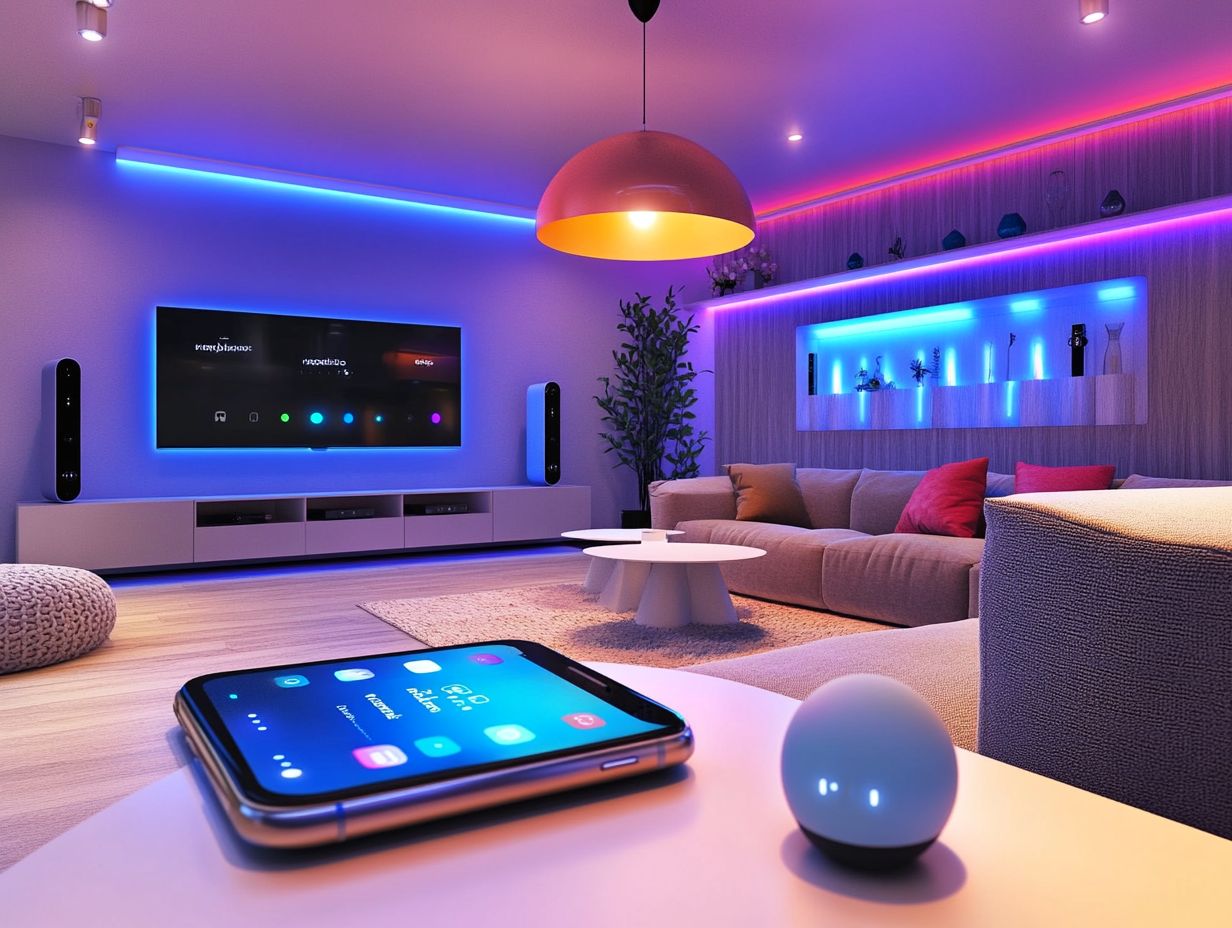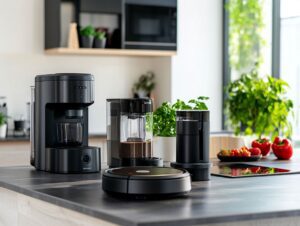Smart home devices are significantly transforming the way we manage our daily tasks, providing both convenience and saving time across the day.
This guide delves into the world of smart home technology, highlighting its many benefits, such as time-saving features and enhanced convenience. It will also cover the various types of devices available, including home automation systems and smart appliances.
You will find essential tips for selecting the ideal devices tailored to your needs, along with a step-by-step setup guide to ensure that you fully maximize the time-saving potential of your smart home.
Explore how these innovative tools can truly transform your lifestyle!
What are Smart Home Devices?
Smart home devices are innovative tools equipped with advanced technology aimed at enhancing the convenience, security, and efficiency of our living environments. These devices connect to the internet and can communicate with one another through a network, facilitating seamless home automation. From smart thermostats that effectively manage energy consumption to voice assistants that respond to verbal commands, these gadgets provide a user-friendly experience that can greatly improve daily routines and overall lifestyle.
Within this ecosystem, one can encounter a variety of devices, including:
- Smart lighting systems, which can be programmed for mood settings or energy savings.
- Smart locks that enhance security by allowing keyless entry and remote access management.
- Home security cameras that offer real-time surveillance.
- Smart plugs and sensors that play a crucial role in energy management by monitoring usage and enabling automated actions based on user preferences.
Together, these technologies not only streamline daily tasks but also contribute to a greener, more efficient household, showcasing the benefits of automation in our everyday lives.
Benefits of Using Smart Home Devices
The advantages of incorporating smart home devices are quite substantial, encompassing enhanced convenience, automation, and improved energy efficiency and productivity.
Smart technology enables homeowners to effortlessly manage their living spaces, streamlining daily routines through task automation while also achieving notable savings on energy bills.
With features like remote control and monitoring capabilities, users can adjust settings from virtually anywhere, ensuring both comfort and security at all times.
Time-Saving Features
The time-saving features of smart home devices are transforming how we manage our daily tasks, enabling automation that enhances productivity while minimizing effort. With tools such as smart plugs and programmable appliances, users can schedule tasks and automate routines, leading to a smoother workflow and more personal time. These innovations not only simplify household management but also contribute to an improved lifestyle.
For example, consider the experience of waking up to the delightful aroma of freshly brewed coffee, thanks to a smart coffee maker that has been programmed to start at a specific time. Similarly, smart thermostats have the capability to learn a family’s schedule, automatically adjusting temperatures for optimal comfort without the need for manual intervention. Home security systems also play a significant role, providing automated alerts that keep users informed while they go about their day.
By integrating these devices into everyday routines, not only is time saved, but a more user-friendly experience is created, allowing residents to focus on what truly matters in their lives.
Increased Efficiency and Convenience
Increased efficiency and convenience are significant advantages that smart home devices provide, enabling homeowners to optimize their living spaces for both comfort and functionality. For instance, smart thermostats can adjust temperatures based on user behavior, while smart lighting systems allow for remote control. This capability enables homeowners to manage their energy consumption and enhance their home comfort with ease. Ultimately, the seamless integration of smart technology fosters a more connected and user-friendly environment.
These intelligent systems offer real-time monitoring, allowing individuals to track their energy usage patterns, which can have a noticeable effect on monthly bills. Scheduling features enable users to automate tasks, such as turning off lights or lowering the heat when no one is home, ensuring that resources are not wasted. Additionally, alerts can notify homeowners of any unusual energy spikes, prompting timely action to rectify inefficiencies.
As more individuals embrace these smart home trends, the potential for creating more sustainable and convenient living spaces continues to grow.
Types of Smart Home Devices
A diverse range of smart home devices is available, each designed to enhance various aspects of home automation and improve the overall user experience.
For instance, smart locks can bolster security, while smart lighting and smart thermostats help manage energy consumption. These connected devices collaborate within smart home ecosystems, streamlining daily routines and enhancing safety features.
Each device plays a vital role in creating an efficient and convenient living environment that caters to individual needs.
Home Automation Systems
Home automation systems act as the foundation of a smart home, enabling users to control multiple devices from a single interface, often through smart hubs or dedicated applications. These systems allow for the seamless integration of various smart home devices, offering a centralized platform to manage security, lighting, energy usage, and comfort features simultaneously. By leveraging machine learning and data analytics, these systems can adapt to user preferences over time.
One of the most impressive features of these intelligent systems is the ability to provide remote access, allowing users to monitor and control their home environment from virtually anywhere in the world. This capability is particularly beneficial for adjusting settings while on the move or ensuring home security when away.
Additionally, voice activation capabilities enable users to interact with their smart home platforms effortlessly, creating a hands-free experience that enhances both convenience and safety. With integrations across various ecosystems, these automation systems not only enrich daily living but also promote energy efficiency, ultimately making homes smarter and more sustainable.
Voice Assistants
Voice assistants are becoming essential features in smart home devices, offering hands-free control over a wide range of tasks through straightforward voice commands. Devices such as smart speakers equipped with digital assistants can handle everything from home security alerts to smart lighting, making them vital for enhancing convenience in today s lifestyle.
Their capability to integrate smoothly with other connected devices further enriches the user experience and encourages task automation.
These virtual assistants can effortlessly adjust the thermostat, lock doors, and even order groceries, all through intuitive voice interactions. The customization options available enable users to establish personalized routines that align with their daily schedules. By utilizing voice commands, individuals can engage with their smart home systems more naturally, minimizing the friction often associated with app-based controls.
The extensive compatibility with various IoT devices, including cameras, appliances, and entertainment systems, ensures that managing a smart home is more efficient and user-friendly than ever. This integration not only saves time but also enhances the overall living experience, making it smarter and more responsive to the needs of users.
Smart Appliances
Smart appliances are thoughtfully designed to enhance energy efficiency while providing greater convenience in our kitchens and homes.
For instance, innovative devices like smart refrigerators, which come equipped with inventory tracking, allow users to manage their groceries more effectively and significantly reduce food waste. Smart ovens offer features such as recipe suggestions and temperature control via mobile apps, making meal preparation more streamlined and enjoyable, ultimately saving time in the kitchen. Additionally, washing machines that can be programmed to operate during off-peak energy hours contribute to lowering electricity costs.
The integration of these smart energy solutions not only simplifies daily tasks but also fosters a user-friendly experience that promotes sustainable living practices. This is especially important for modern households that aim to minimize their carbon footprint.
How to Choose the Right Smart Home Devices
Selecting the appropriate smart home devices can greatly influence your home s efficiency, convenience, and overall functionality.
It is important to take several factors into account, such as compatibility with your existing systems, ease of use, and your specific needs when making your choices.
Given the rapid advancements in smart technology, having a clear understanding of which devices will best complement your lifestyle is essential for creating a personalized smart home ecosystem.
Factors to Consider
When selecting smart home devices, it is important to consider several factors to ensure a successful setup that aligns with your specific needs. Begin by assessing the compatibility of the devices with your existing home network, as well as evaluating the overall user experience they provide, including their ease of use and installation process. Consider the range of features available, such as remote access and energy management capabilities, which can significantly enhance your smart home experience.
Moreover, it is crucial to ensure that the devices can integrate seamlessly with any existing systems you may have, such as voice assistants or home security setups. The installation process should ideally be straightforward, supported by user-friendly applications that guide you through each step, minimizing any potential technical challenges.
Additionally, seek out devices that offer customizable settings to fit your lifestyle, whether that involves adjusting lighting based on your daily routines or optimizing energy consumption for greater savings. By prioritizing these elements, you will create a more fulfilling experience with smart home solutions that genuinely cater to your needs.
Setting up and Using Smart Home Devices
Setting up and using smart home devices can be a fairly simple process, particularly with the user-friendly installation guides and app integrations provided for most products.
Generally, the setup includes connecting the devices to your home network, downloading the appropriate smart home app, and following a few easy steps to establish the connections.
With the right approach, anyone can create a functional and efficient smart home ecosystem tailored to their lifestyle needs.
Step-by-Step Guide
A step-by-step guide for setting up smart home devices can greatly simplify the installation process and help you maximize the benefits these devices offer. Begin by unboxing your device, gathering the necessary tools, and carefully following the manufacturer s instructions to connect it to your home network. Don t forget to set up the companion app as well; it provides additional functionalities and ensures seamless integration within your smart home ecosystem.
Before you dive into the installation, it s advisable to create a dedicated space for all your smart devices to prevent clutter. Also, check your Wi-Fi signal strength in the intended locations prior to starting the connection process, as a strong signal is essential for optimal device performance.
Once you ve completed the setup, take some time to familiarize yourself with the voice control options and customization features to enhance usability. If you encounter complications, some common troubleshooting tips include:
- Power cycling the device
- Resetting the network settings
For persistent issues, always consult the support sections of the relevant apps or the manufacturer s website. This approach will help you resolve problems efficiently and ensure a smoother overall user experience.
Tips for Maximizing Time-Saving Benefits
To maximize the time-saving benefits of smart home devices, it is essential to effectively utilize their advanced features and functionalities. By making use of app integration, remote control capabilities, and programmable devices, individuals can substantially improve their daily routines and optimize home management.
Additionally, customizing settings to align with personal preferences ensures that smart technology effectively meets individual needs, ultimately enhancing convenience and productivity.
Integration and Customization
Integration and customization play a crucial role in maximizing the benefits of smart home devices, allowing users to tailor their experiences to meet their unique lifestyle needs. Through the use of smart home applications, homeowners can connect multiple devices, automate tasks, and establish personalized preferences that help streamline their daily routines. This level of customization not only enhances the user experience but also improves the overall efficiency of the home automation system.
These applications enable individuals to create harmonious interactions among various smart devices, ensuring they function together rather than in isolation. For example, by integrating lighting, temperature control, and security features, users can adjust settings based on real-time data, such as occupancy or weather conditions.
The ability to set specific schedules or utilize voice commands contributes to a seamless living experience, making daily life more convenient. With advanced smart home solutions readily available, users can enjoy increased comfort, energy savings, and the peace of mind that comes from knowing their home can adapt to their dynamically changing needs.
Frequently Asked Questions
What are smart home devices?
Smart home devices are electronic devices that can connect to the internet and be controlled remotely. They often have features that allow them to automate tasks and make your home more efficient.
How can smart home devices save me time?
Smart home devices can save you time by automating tasks that you would normally have to do manually. For example, a smart thermostat can adjust the temperature in your home based on your preferences, saving you the time and effort of constantly adjusting it yourself.
What types of tasks can be automated with smart home devices?
Smart home devices can automate a wide range of tasks, such as adjusting the temperature, turning lights on and off, locking doors, and even doing chores like vacuuming. They can also be programmed to perform these tasks at specific times, saving you the hassle of remembering to do them.
Do I need to have a lot of technical knowledge to use smart home devices?
No, most smart home devices are designed to be user-friendly and do not require any technical knowledge to use. Many devices can also be controlled through a smartphone app, making it even easier to use.
Are there any security concerns with using smart home devices?
As with any internet-connected device, there is always a risk of security breaches. However, most smart home devices have built-in security features and it is important to set up strong passwords and keep your devices and software up to date to minimize any potential risks.
Can I control multiple smart home devices at once?
Yes, many smart home devices can be linked together and controlled through a single app or voice assistant. This allows you to create routines and control multiple devices with just one command, making your smart home even more convenient and time-saving.

